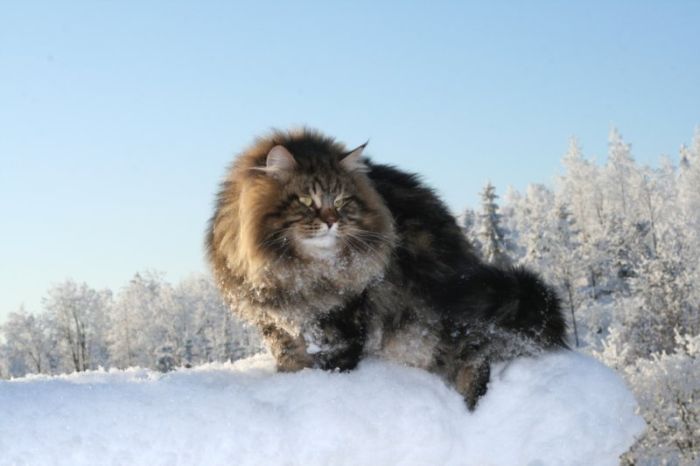|
|
Amur Ezra, Siberian Cat In The Winter
|
Siberian cats moult once or twice a year. The first moult is at the end of winter. The winter moult is instigated not by a change in temperature but by a change in day length. Many Siberians will experience a less intense "mini moult" at the end of the summer season.
• Reproduction
Siberian cats tend to come into reproductive readiness earlier than other breeds, sometimes as young as five months. It is thought that this is related to the breed's closeness to its natural wild state. Feral cats often die young due to harsher natural conditions. Achieving reproductive ability early and having large litters provides a biological balance to this. On average, a Siberian litter consists of five to six kittens, as compared to the average litter of three to four kittens in breeds who have been registered as pedigreed cats. However, Siberian litters may consist of as few as one and as many as nine kittens.
Siberian cats are excellent parents, with the fathers helping to care for kittens if they are allowed access to the nest. Parents are often strongly bonded and some mothers will only mate with one male. Atypical for cats, teenage male Siberians have been seen cuddling and grooming their cousins and siblings. Siberians, due to their communal nature, often do better in pairs in captivity.
|
|









